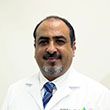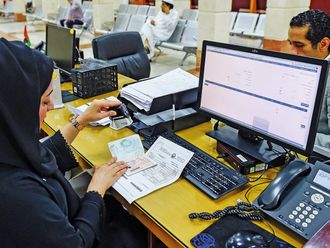Dubai Health Authority-run Rashid Hospital recently introduced the most advanced 3D imaging equipment and navigation system for accurate and precision surgery, especially spinal surgeries and neurosurgery.
The three-in-one system, known as O-arm, provides real-time imaging of a patient’s anatomy with high-quality images and a large field of view in both 2D and 3D.
“This is the future,” says Dr Bilal El Yafawi, Consultant Orthotrauma Surgeon and head of Orthotrauma department at Rashid Hospital. “In fact, in the next phase our aim is to achieve robotic surgery. This technology offers many benefits to patients.”

Now with the introduction of the O-arm, we are able to use this system to do the CT scan — which takes only 25 seconds — in the operation theatre.
Dr El Yafawi says previously patients who required spinal surgeries mainly due to fractures needed to undergo conventional CT scans and then the surgery would take place with the help of those scans. Post-surgery another CT scan would be conducted. In some cases, patients needed another surgery if the position of the screw needed alignment. The total time in hospital post-surgery was around seven days.
“Now with the introduction of the O-arm, we are able to use this system to do the CT scan, which takes only 25 seconds, in the operation theatre. The O-arm system provides us with all the images in real time in a 2D or 3D format and provides us with 3D navigation. This allows the surgeons to precisely place the screw and fix the spine using real-time imaging. After the procedure, another CT scan is conducted in the OT itself; this eliminates the need for another surgery even in complicated cases. Moreover, the incisions in the spine are much smaller than those needed in conventional surgery, thus recovery time is maximum three days versus a week in conventional surgery.
“This technology has helped facilitate advanced surgical approaches like minimally invasive surgeries. It gives us surgeons additional information in challenging procedures such as heavier patients or patients with unusual anatomy.”
Another major advantage of the O-arm is that it helps reduce the radiation dose to the patients, surgeons and staff eliminating the need to wear lead protective apparel during the steps of the procedure. “It’s in line with our objective to enhance the safety of the patients as well as the healthcare providers,” says Dr El Yafawi.
Mahra Falaknaz, 30, recently underwent spinal surgery at Rashid Hospital using this technology. She was skiing in Switzerland when an accident left her immobilised. Doctors informed her that she needed spinal surgery. “I had several options to get the surgery done there but insisted to come back and do it in Rashid Hospital as I trust their expertise,” says Falaknaz, who was operated upon by Dr El Yafawi. “I was on a stretcher and came back to Dubai and was admitted right away to Rashid Hospital.”












